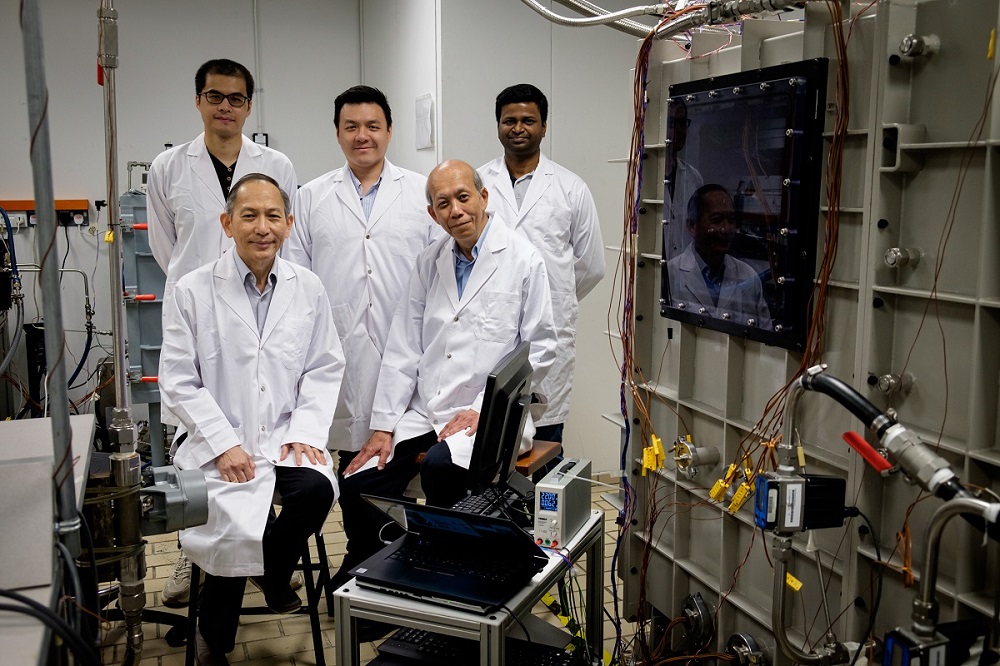
Image: (anti-clockwise from bottom left) Leader of the project NTU Associate Professor Wong Teck Neng, former Associate Professor Toh Kok Chuan, research fellow Ranjith Kandasamy, Asst Prof Ho Jin Yao, and research fellow Liu Pengfei, who developed the spray cooling system prototype for data centres (seen on the right).
A more sustainable and green method for cooling down servers in data centres has been developed, potentially reducing up to 26 per cent in both energy costs and carbon footprint.
Currently, data centres in Singapore account for 7 per cent of the nation's total electricity consumption. With demand for cloud computing increasing, it is critical to find a sustainable solution that reduces energy consumption and carbon footprint of data centres.
In a data centre, the hottest component in a server is the CPU - central processing unit - which requires a dedicated heatsink that is air cooled, and the date centre also needs to be cooled by low temperature air-conditioning.
In comparison, this innovation developed by NTU scientists uses a special spray of non-conductive fluids to cool the CPU directly without a heatsink, and a closed-loop system to collect the fluids and to cool them in tropical ambient air temperature without the need of a chiller or air-conditioning.
It will also allow CPUs to run faster and perform better than today's speeds which are limited by air cooling, since faster speeds will lead to higher temperatures.
As spray-cooling has a higher heat rejection capability, it is estimated to require 30 per cent lesser space than a conventional air-cooled data centre.






